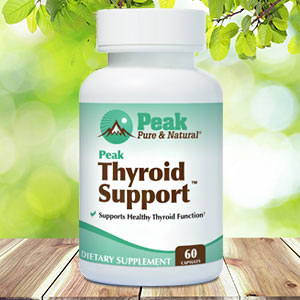Get Easy Health Digest™ in your inbox and don’t miss a thing when you subscribe today. Plus, get the free bonus report, Mother Nature’s Tips, Tricks and Remedies for Cholesterol, Blood Pressure & Blood Sugar as my way of saying welcome to the community!
Why do women experience Parkinson’s differently than men?

Affecting nearly 1 million Americans, Parkinson’s disease (PD) is a progressive neurodegenerative condition resulting from dopamine deficiency, impacting the brain’s functionality and leading to motor impairment.
With a yearly count of approximately 60,000 new cases and an expected rate of 1.2 million individuals living with the condition by 2030, increased research has been undertaken to identify the causes and characteristics of PD.
Accounting for the rate of diagnoses between genders, studies have found that men are 1.5 times more predisposed to Parkinson’s than women. This apparent discrepancy has led researchers to consider the multiple gender-specific aspects affecting the condition’s varying expression and diagnosis in men and women.
Women Are More Likely To Receive Delayed Diagnosis
Although they are less likely to be diagnosed with Parkinson’s than men, over 400,000 women in the US live with the condition. The gender differential in diagnosis is assumed based on total fatalities; however, this isn’t an accurate indicator since it doesn’t distinguish new cases based on gender, and the cause of death isn’t always precisely certified.
Unfortunately, women-focused PD research isn’t extensive. But even with the limited number of studies on the subject, researchers have observed distinct variables affecting women’s experience with the condition.
The female hormone estrogen is considered to play an important role in the brain’s neuroprotection. A 2019 study suggests estrogen promotes the production and release of dopamine, reduces oxidative stress, and protects against damage resulting from inflammation. Another study indicates that prolonged fertility and latent onset of menopause are associated with a reduced risk of developing PD.
Compared to men, it’s reported that women may manifest symptoms at an earlier age and have a higher chance of developing a less severe form of PD with reduced movement deterioration symptoms. Though inconclusive, women report psychological symptoms like depression more frequently than men with PD.
Both genders are prescribed levodopa as a first-line solution in managing PD symptoms. Still, the lower average body weight, inappropriate dosage, and age of onset seem to make it less effective for women, requiring healthcare specialists to fine-tune their prescriptions. At the same time, although reporting better outcomes, women are less likely to receive deep brain stimulation surgery due to the frequent misdiagnosis of their PD symptoms.
Regarding the overall quality of care, women appear to face certain disadvantages and are more likely to attend appointments alone, resort to healthcare at home or live in a nursing facility. Due to the fact that it is in their nature to be nurturers and take care of others, most women tend to downplay symptom severity, thus receiving delayed accurate diagnoses and referrals to specialists and facing more psychological distress due to significantly less social support than men.
Environmental Risk Factors Impact Genders to Varying Degrees
In addition to genetic and biological considerations, certain environmental factors are also believed to play a role in the development of Parkinson’s, affecting women and men to different degrees. For example, although the underlying mechanisms are unclear, traumatic head injuries have been associated with an increased risk of developing PD, most common in traditionally male-oriented high-impact sports.
A more significant and often overlooked environmental factor affecting Parkinson’s incidence is long-term exposure to toxic substances in industrial occupations, such as dangerous chemical compounds like trichloroethylene (also used to decaffeinate coffee prior to 1980) or polychlorinated biphenyl (PCB). Both substances are currently either banned or drastically regulated in the US.
Other hazardous chemicals used in labor-intensive fields face no such regulation despite multiple studies indicating a high correlation with neurological disorders. For instance, paraquat is a highly toxic herbicide banned in 32 countries, including China and the EU, due to its association with Parkinson’s. In the US, paraquat is a heavily utilized product in agriculture, requiring training and licensing for handling.
However, the EPA downplays its potential for causing PD and even recently reapproved it until 2035. Out of the 4.2 million pounds of paraquat used in the US in 2018, California applied 1.3 million pounds, or about 30% of the total quantity. Incidentally, California had the highest rate of Parkinson’s diagnosis that year at 85,100 cases. What is more concerning is that the states with the subsequent highest reported instances of PD during the same period (Florida – 64,000, Texas – 52,500, New York – 48,000, Pennsylvania – 35,400) also use paraquat extensively in agriculture.
This represents a severe threat of toxic exposure to the nearly 3 million US farmworkers and surrounding agricultural communities exposed to paraquat regularly. Male farmers face the most significant risk of direct exposure to paraquat during mixing, application, and clean-up. In contrast, women face a higher risk of indirect exposure when planting or harvesting crops. Families in farming communities can be further harmed by paraquat when workers inadvertently carry particles indoors in the form of residue on their clothing, footwear, skin, or hair.
Improving Awareness and Outcomes for Women with Parkinson’s
Due to men’s propensity to develop Parkinson’s more often than women, a mistaken perception of the condition has evolved, identifying it as a male-focused risk. This erroneous belief could partly explain why it takes 61% longer for women to receive a proper diagnosis and referral to specialist treatment.
Given the biological differences and social challenges affecting women with Parkinson’s differently than men, a greater public awareness of gender-specific aspects and institutional involvement is required to improve their condition.
Women should be aware that PD is an “equal opportunity” disease, impacting individuals regardless of gender, ethnicity, or age. Even so, research suggests that women with early or moderate PD experience more pain than men and are more susceptible to mental health symptoms like anxiety, depression, and disrupted sleep before experiencing motor symptoms. Tracking hormonal cycles and PD symptom progression is especially recommended for premenopausal women.
Healthcare providers should account for gender differences and customize treatment for women’s lower body weight and specific drug metabolism. Concurrently, healthcare professionals should be afforded the proper tools and guidance to accurately diagnose, identify and treat women-specific PD symptoms, despite common-held beliefs about the condition. The EPA can also help reduce the risk of Parkinson’s by increasing the regulation of toxic herbicides associated with its onset and development.
Lastly, given that women are woefully underrepresented in Parkinson’s clinical trials and research, more efforts are required to increase their inclusion, allowing for a better understanding of the condition overall and improving the present discrepancies in treatment and care.
Editor’s note: Have you heard of EDTA chelation therapy? It was developed originally to remove lead and other contaminants, including heavy metals, from the body. Its uses now run the gamut from varicose veins to circulation. Click here to discover Chelation: Natural Miracle for Protecting Your Heart and Enhancing Your Health!














